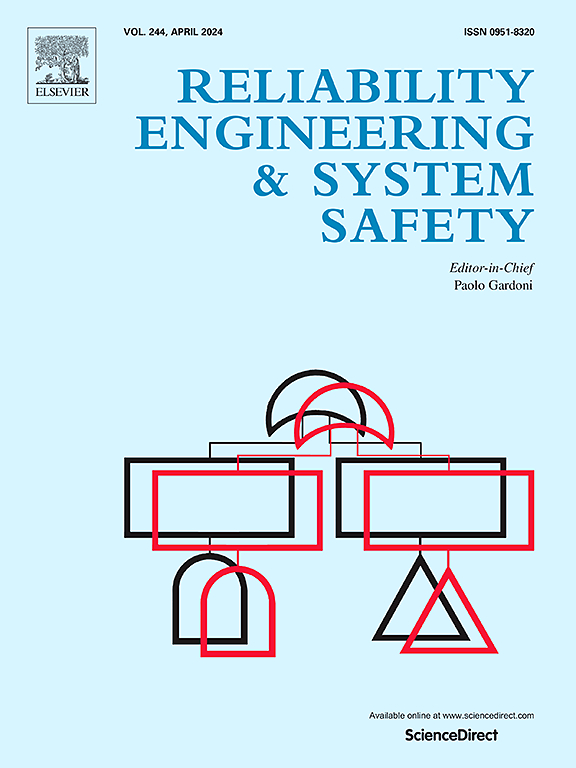IF 9.4
1区 工程技术
Q1 ENGINEERING, INDUSTRIAL
引用次数: 0
摘要
随着土木工程的发展,岛屿之间和跨越峡湾的桥梁设计不断推陈出新,跨度越来越 大,沿海地区的船舶交通密度越来越大,船舶与桥梁相撞事故的发生频率也越来越高。因此,工程师必须有可靠的模型和方法来对这些新型桥梁进行安全设计,以模拟和分析早期主动缓解措施。本研究提出了一种新的船舶交通碰撞概率模拟中保真模型(STAPS),其中包括船舶的机动性和运动物理特性,并在概率计算中使用蒙特卡罗模拟法。该模型与低保真模型 IWRAP Mk2 进行了比较,后者用于分析船舶与结构发生碰撞的风险。本文介绍了两个船舶碰撞案例研究,以比较 STAPS 和 IWRAP Mk2 模型的保真度水平如何影响船舶与桥梁碰撞事件的计算概率水平。总体而言,研究结果表明,IWRAP Mk2 高估了事故概率,例如,在基本情况下,IWRAP Mk2 预测的碰撞概率是 STAPS 的 4.5 倍。研究得出结论,在桥梁设计的早期阶段,IWRAP Mk2 更受青睐,而在后期阶段,STAPS 更受青睐。本文章由计算机程序翻译,如有差异,请以英文原文为准。
Probabilistic analysis of ship-bridge allisions when designing bridges
The advances in civil engineering with novel bridge designs between islands and across fjords with long spans, increasing ship traffic density and larger ships in coastal areas, have resulted in an increased frequency of ship-bridge allision accidents worldwide. It is thus essential to have reliable models and methods for engineers to create safe designs of these new bridges to simulate and analyse early pro-active mitigation measures. This study presents a new ship traffic allision probabilistic simulation mid fidelity model (STAPS), which includes a ship's manoeuvrability and motion physics and uses the Monte Carlo simulation method in the probabilistic calculations. It is compared with the low fidelity model IWRAP Mk2, which is used to analyse the risk of ship allisions with structures. Two case studies with ship-allision scenarios are presented to compare how the model fidelity levels of STAPS and IWRAP Mk2 affect the calculated probability levels of ship-bridge allision events. On a general level, the results show that IWRAP Mk2 overestimates the accident probability, for example IWRAP Mk2 predicts a 4.5 times higher probability of allisions compared to STAPS in the base case, and that the failure's duration and route layouts significantly influence both models. The study concludes that IWRAP Mk2 is preferred in the early phase of bridge design and STAPS is preferred in later stages.
求助全文
通过发布文献求助,成功后即可免费获取论文全文。
去求助
来源期刊

Reliability Engineering & System Safety
管理科学-工程:工业
CiteScore
15.20
自引率
39.50%
发文量
621
审稿时长
67 days
期刊介绍:
Elsevier publishes Reliability Engineering & System Safety in association with the European Safety and Reliability Association and the Safety Engineering and Risk Analysis Division. The international journal is devoted to developing and applying methods to enhance the safety and reliability of complex technological systems, like nuclear power plants, chemical plants, hazardous waste facilities, space systems, offshore and maritime systems, transportation systems, constructed infrastructure, and manufacturing plants. The journal normally publishes only articles that involve the analysis of substantive problems related to the reliability of complex systems or present techniques and/or theoretical results that have a discernable relationship to the solution of such problems. An important aim is to balance academic material and practical applications.
 求助内容:
求助内容: 应助结果提醒方式:
应助结果提醒方式:


